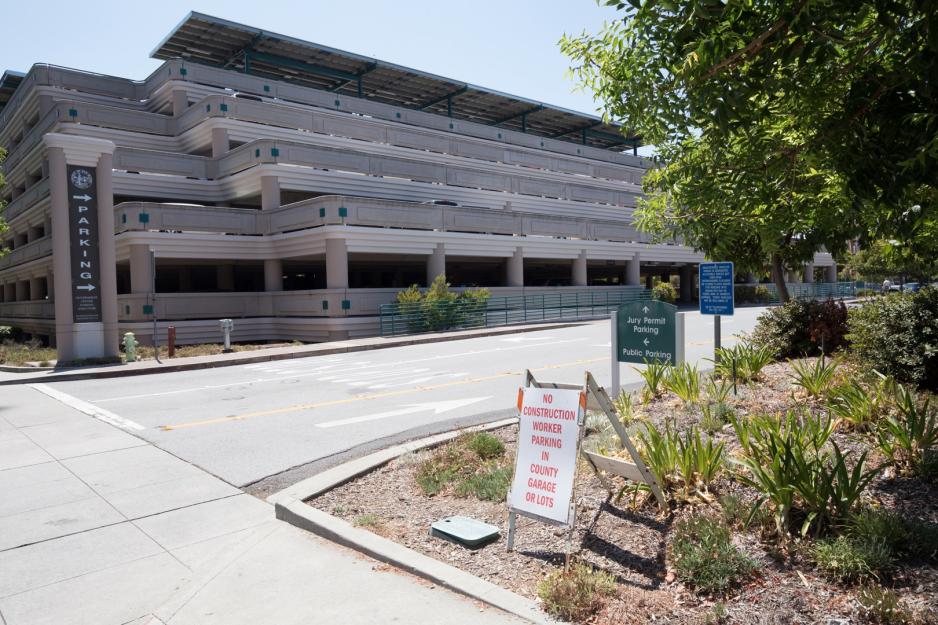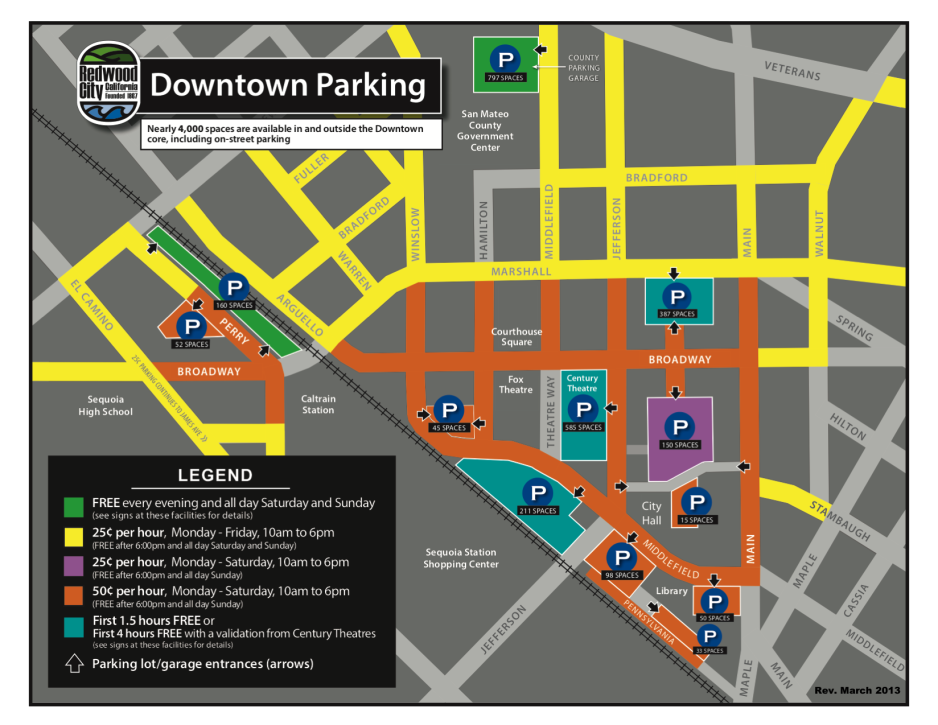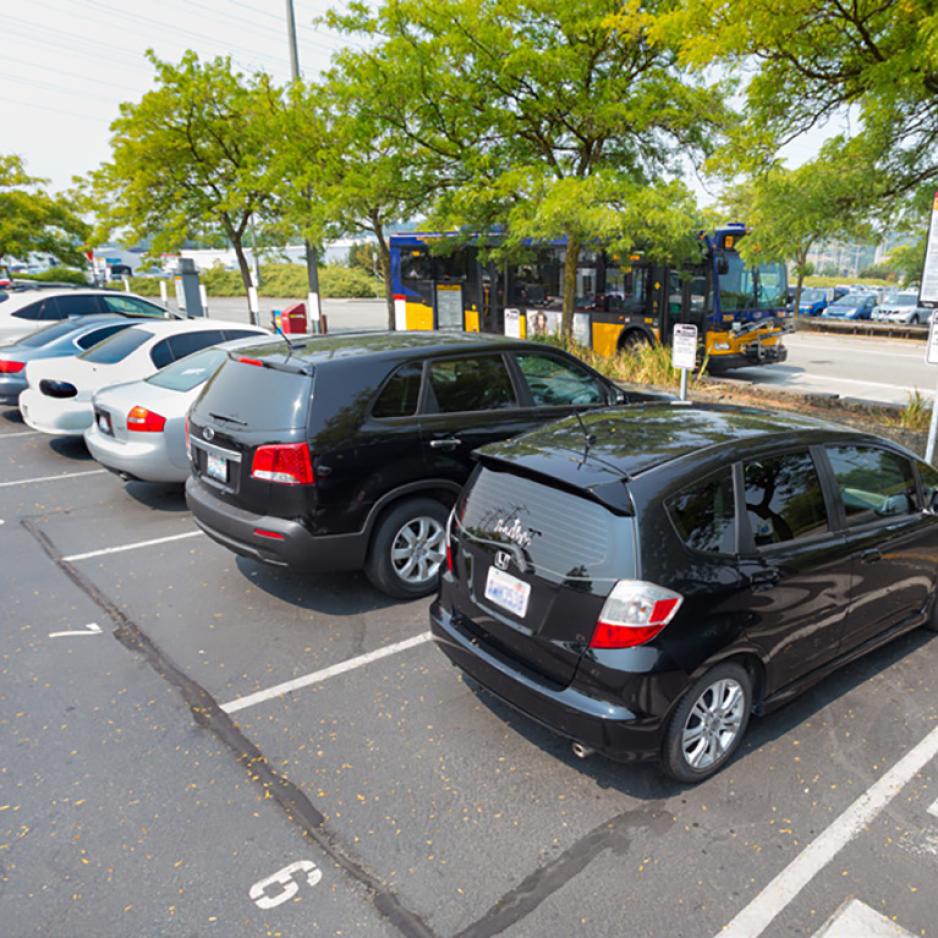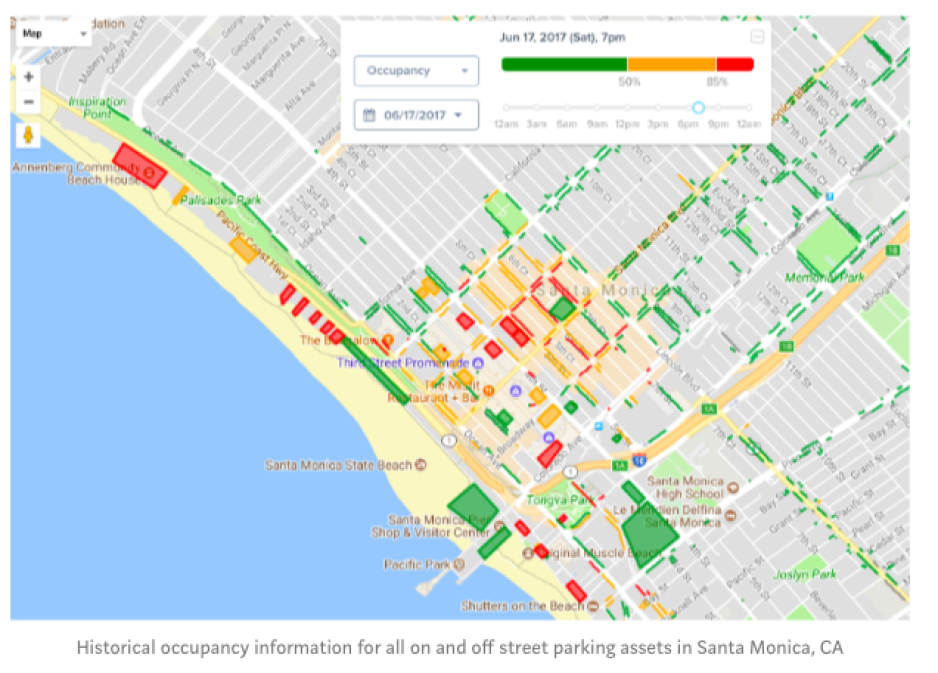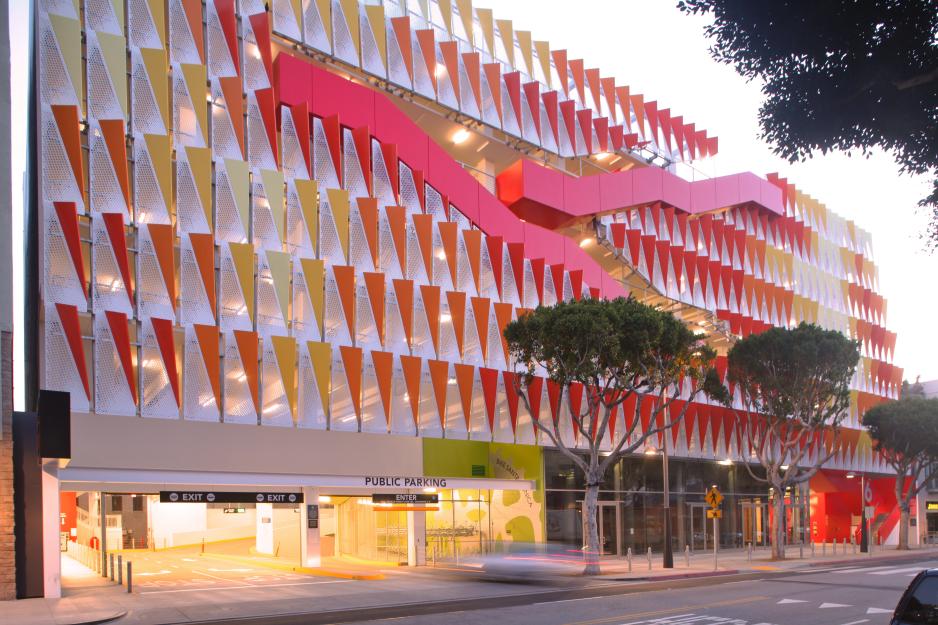Redwood City, CA, USA - Downtown Parking Program
In 2005, Redwood City adopted a progressive parking plan to manage the limited parking supply within a new parking management district. Parking time limits were removed, but a policy was enacted to allow parking prices to be adjusted to meet demand.
Since the implementation of the program, Redwood City saw a significant amount of new development in the parking management district that could lead to added parking demand. Stakeholder and visitor intercept outreach were conducted to capture parking habits and sentiment of the Downtown Parking Program. Overall, patrons were satisfied with the parking and their ability to find and pay for parking. There was room for improvements regarding wayfinding and education of the parking program.
The Parking Program determined that the average parking duration without limits is 3 hours for on-street spaces, and 3.5 hours for off-street spaces. The elimination of time limits allowed vehicles to park once in Downtown for an extended period, rather than cruising for another space, at the expense of artificially turning over the previously occupied space. The elimination of parking duration limits allowed downtown employees to avoid purchasing parking permits.
The national average for parking hourly rate is $1.67. Based upon demand, the adjusted parking prices to meet demand were set at $0.50 per hour in the downtown periphery and $0.75 in the downtown core. This pricing range attempts to provide 85 percent occupancy during enforcement hours.
King County Metro Transit, WA, USA - Parking Supply Case Study
King County Metro Transit faced issues of high demand for Park & Ride facilities and did not have funding to create new parking. King County Metro Transit relied on shared parking strategies to address their parking shortfall.
King County Metro Transit leased parking spaces within private parking facilities which serve multiple businesses and land uses. These leases take advantage of staggered parking demand, allowing users to utilize the facility during off-peak hours. The approach provides parking opportunities for station locations that otherwise would not be available at this level of funding.
Due to the success of the shared parking agreement, King County Metro Transit does not have to construct new parking to meet parking demands, and the demand can be met immediately. In addition, parking demands of multiple uses are accommodated, and parking facilities are utilized to their maximum potential. The shared parking agreements allows public sector agencies to take advantage of the availability of underutilized parking spaces by not paying market price per space. Additionally, King Count Metro Transit supported customers through positive parking experiences.
Santa Monica, CA, USA - Parking Supply Technology
Santa Monica faced an issue regarding lack of turnover in high demand areas and excessive cruising for parking in the downtown core which increased vehicles on the road and slowed through traffic.
The City used various forms of technology to successfully manage their off-street parking demand, including a wayfinding system and loop detection systems. The City collects parking occupancy, turnover, and availability data at off- and on-street parking locations through the loop detection technology and smart meters, respectively. The parking availability information is then distributed to users through a City-owned website and smartphone application.
In all, the City implemented individual space sensor technology, wayfinding signage, and real-time availability applications to manage their supply. This provided the City with multiple benefits, including the ability to analyze parking characteristics and adjust parking strategies accordingly. This influx of technology has ultimately led to increased turnover, occupancy, and available parking in high demand areas, and reduced cruising for parking and improved traffic operations.
